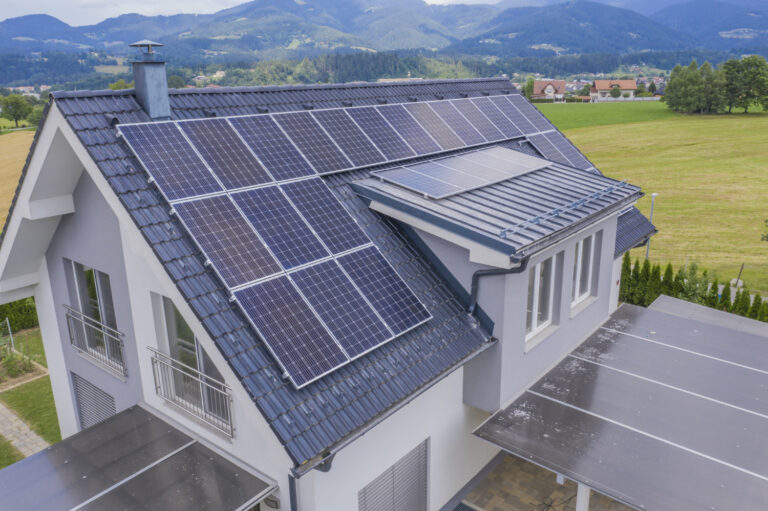Top Mold Removal Pressure Washing Techniques for Miami Homes
Living in Miami, we're no strangers to the persistent challenge of mold growth in our homes. The city's warm, humid climate creates the perfect breeding ground for these unwelcome fungi. That's why we've seen a rise in demand for effective mold removal pressure-washing techniques. As homeowners, we know the importance of maintaining a clean, healthy living environment, and tackling mold removal pressure washing Miami is crucial to achieving this goal.
This article will explore the top mold removal pressure-washing techniques for Miami homes. We'll explore mold growth in our unique climate, how to prepare for a thorough cleaning, and the most effective pressure-washing methods to kick mold to the curb. We'll also cover strategies to prevent mold from coming back after we've cleaned it up. Whether considering DIY solutions or hiring pressure cleaning services, this guide will help boost your home's curb appeal and create a healthier living space.
Understanding Mold Growth in Miami's Climate
Miami's warm and humid climate creates the perfect breeding ground for mold. As homeowners, we need to understand the conditions that lead to mold growth and the types of mold we might encounter. This knowledge is crucial for implementing effective mold removal pressure washing techniques.
Common Types of Mold in Miami
In our tropical paradise, we often come across several types of mold. Aspergillus is a common culprit, appearing as black or greenish spots in toilets or air ducts. It can cause allergic reactions, including fever and mucus cough. Penicillium, with its fuzzy green, blue, or yellow appearance, thrives in damp carpets and has a musty smell. It can irritate our respiratory system.
Alternaria, often found outdoors, can enter our homes through open windows. It clings to damp areas like window sills and under sinks. This black, velvety mold can cause allergic reactions, runny noses, and skin rashes. Cladosporium, another outdoor mold, can grow on wood or textiles inside our homes. It appears olive or black and is commonly found in basements, attics, and bathrooms.
Perhaps the most notorious is Stachybotrys, also known as black mold. It is greenish-black and poses significant health risks, including internal bleeding and memory loss. Recognizing these mold types can help us choose the right pressure cleaning services to address the problem effectively.
Factors Contributing to Mold Growth
Miami's climate plays a significant role in mold growth. High temperatures and humidity levels create an ideal environment for mold to thrive. As the mercury rises, so does the risk of mold infestation, especially in areas prone to moisture buildup, like bathrooms, kitchens, and basements.
Moisture is the primary catalyst for mold growth. In our humid climate, moisture can infiltrate homes through various avenues, such as leaky roofs, plumbing issues, or inadequate ventilation. Condensation on windows and walls further exacerbates the problem, providing ample moisture for mold to flourish.
Another factor to consider is the presence of organic materials in our homes. Mold feeds on materials like wood, paper, and organic fibers, common in most households. Even the oils from our skin left on surfaces can provide sufficient nutrients for some molds to grow.
Health Risks of Mold Exposure
Mold exposure can have profound health implications. Many of us may experience allergic reactions, including sneezing, runny or stuffy nose, itchy or watery eyes, and skin rashes. For those with asthma or other respiratory conditions, mold exposure can lead to more severe symptoms like coughing, wheezing, and shortness of breath.
In some cases, mold exposure can cause more severe health issues. Certain types of mold, like Stachybotrys, produce mycotoxins that can have severe health implications with prolonged exposure. These can lead to chronic sinus infections, fatigue, and even depression.
Understanding these health risks underscores the importance of prompt and thorough mold removal. Professional pressure washing services in Miami can help eliminate mold and prevent its recurrence, ensuring a healthier living environment for our families.
Preparing for Mold Removal Pressure Washing
Before we dive into the mold removal pressure washing techniques, it's crucial to prepare appropriately. This step ensures our safety and the effectiveness of the cleaning process. Let's go through the essential preparations we need to make.
Safety Precautions
When dealing with mold, we can't stress enough how important it is to protect ourselves. Mold spores can cause various health issues, especially those with allergies, asthma, or weakened immune systems. Here's what we need to do:
First, we'll put on protective gear. This includes non-vented goggles to shield our eyes, long rubber gloves to protect our hands and arms, and disposable coveralls to keep mold spores off our clothes. For small areas (less than 30 square feet), we'll use a half-face or full-face respirator with an N95 rating. We'll opt for a respirator with a higher P100 rating for larger areas.
We'll also cover any nearby plants or objects that could be damaged by the pressure washer. During the cleaning process, it's a good idea to close all windows and doors to prevent mold spores from entering our home.
Necessary Equipment and Supplies
To effectively remove mold using pressure washing techniques, we'll need the right tools for the job. Here's what we'll gather:
• A pressure washer with a range of 1,500 to 3,000 PSI
• Various nozzles (15-degree, 25-degree, and 40-degree)
• A mold-killing solution (we'll discuss this more in the pre-treatment section)
• Tarps, berms, or storm drain covers to contain wastewater
• A pump or wet vacuum to collect wastewater
• Scrub brushes for stubborn areas
Pre-Treatment Techniques
Pre-treating the moldy areas is a crucial step that many people overlook. It can make our pressure washing more effective and provide a longer-lasting clean. Here's how we'll do it:
-
We'll start by inspecting the affected area and identifying the type of mold present. This helps us choose the most effective pre-treatment solution.
-
Next, we'll apply a mold-killing solution to the affected areas. We can use commercial products specifically designed for mold removal or make our solution using equal parts white vinegar and water.
-
We'll let the solution sit for about 10 to 15 minutes. This gives it time to penetrate the mold and kill the spores, making them easier to remove during pressure washing.
-
We might need a scrub brush for particularly stubborn areas to work the solution into the surface.
-
After pre-treating, we'll rinse the area lightly with water before starting the primary pressure washing process.
Following these preparation steps will set us up for success in our mold removal efforts. Remember, thorough preparation is critical to achieving the best results and maintaining a mold-free environment in our Miami homes.
Top Pressure Washing Techniques for Mold Removal
Now that we've prepared our equipment and taken necessary safety precautions, let's dive into the top mold removal and pressure washing techniques for Miami homes. These methods will help us effectively combat mold growth and boost our home's curb appeal.
Low-Pressure Washing for Delicate Surfaces
We need to be extra careful when dealing with delicate surfaces like vinyl siding, wood paneling, or stucco. That's where low-pressure washing, also known as soft washing, comes in handy. This technique uses less than 500 PSI and slightly more pressure than a garden hose.
We start by applying a specialized cleaning solution to break down dirt and organisms living on the surface. This solution typically contains a mixture of bleach, surfactants, and water. We let it sit for about 5 to 10 minutes, making sure to reapply water to any areas that begin to dry.
After giving the detergent enough time to work its magic, we rinse the surface using a low-pressure spray pattern from the bottom up. This method is ideal for cleaning fragile surfaces without damaging them.
High-pressure washing for Stubborn Mold
We must step up our game with high-pressure washing for tougher mold infestations on more durable surfaces like concrete or brick. This technique uses water pressure ranging from 1,500 to 3,000 PSI to blast stubborn mold and dirt away.
When using high-pressure washing, we need to be extra cautious. We start by selecting the proper nozzle – usually, a 15-degree or 25-degree tip works best for mold removal. We keep the nozzle about 10-12 inches from the surface and use smooth, overlapping strokes to avoid streaking.
It's important to note that while high-pressure washing can be effective, it can also damage certain surfaces if not done correctly. Before tackling the entire surface, we always test a small, inconspicuous area first.
Hot Water Pressure Washing
Hot water pressure washing can be a game-changer for particularly stubborn mold or in areas with heavy buildup. Combining heat and pressure can break down mold more effectively than cold water alone.
When using this technique, we start with water temperatures around 180-200 degrees Fahrenheit. The heat kills mold spores and loosens the bond between the mold and the surface, making it easier to wash away.
Hot water pressure washing benefits exterior surfaces like driveways, patios, and decks. However, it should be used with caution on wooden surfaces, as the high heat can potentially damage the wood fibers.
Remember, while these pressure-washing techniques can be highly effective for mold removal, they require skill and caution to avoid damaging your property. If you're unsure about tackling the job yourself, it's always best to consider professional pressure cleaning services in Miami. They have the expertise and equipment to handle even the most challenging mold problems, ensuring your home stays clean and mold-free.
Post-Washing Mold Prevention Strategies
After successfully removing mold using pressure washing techniques, it's crucial to implement strategies to prevent its return. By taking proactive measures, we can maintain a mold-free environment and protect our Miami homes from future infestations.
Applying Mold-Resistant Coatings
One effective way to prevent mold growth is by applying mold-resistant coatings to surfaces prone to moisture accumulation. These coatings create a barrier that inhibits mold growth and makes it easier to clean surfaces in the future.
We recommend using products like Fiberlock IAQ 6000 or RMR Mold Resistant Coating. These 100% acrylic coatings are designed to withstand moist, humid conditions typical in Miami. They contain EPA-registered antimicrobials that prevent mold growth on the cured film's surface.
When applying these coatings, we ensure the surface is arid and clean. We use a brush, roller, or airless sprayer to apply the product evenly. Maintaining an air and surface temperature of at least 50°F during application and drying is essential.
Improving Ventilation and Moisture Control
Proper ventilation and moisture control are crucial to preventing mold growth. We focus on reducing indoor humidity levels, ideally keeping them between 30-50%. This can be achieved through several methods:
- Installing exhaust fans in high-moisture areas like bathrooms and kitchens.
- Using dehumidifiers in basements or other damp areas.
- Ensuring proper airflow by opening windows or using fans when weather permits.
We also recommend regular inspections of the home's HVAC system, gutters, and downspouts. Properly maintaining these systems helps prevent moisture buildup and reduces the risk of mold growth.
Regular Maintenance Tips
To keep mold at bay, we suggest implementing a regular maintenance routine. This includes:
• Conducting routine inspections to identify potential moisture issues early.
• Promptly fixing any leaks in plumbing, roofs, or windows.
• Regularly cleaning and drying surfaces prone to moisture accumulation.
• Using mold-resistant materials during renovations or repairs.
We also recommend pressure cleaning services in Miami for annual maintenance. These professional services can help maintain the cleanliness of exterior surfaces and prevent mold growth.
By implementing these post-washing mold prevention strategies, we can significantly reduce the risk of mold recurrence in our Miami homes. Remember, mold prevention is controlling moisture and maintaining a clean environment. These practices allow us to enjoy a healthier, mold-free living space for years.
Conclusion
Tackling mold growth in Miami homes is crucial for maintaining a healthy living environment and boosting curb appeal. The techniques we've explored, from low-pressure washing for delicate surfaces to hot water pressure washing for stubborn infestations, offer practical solutions to kick mold to the curb. By understanding the unique challenges of our climate and taking the proper precautions, we can keep our homes mold-free and looking their best.
Remember, prevention is critical to maintaining a mold-free home. Applying mold-resistant coatings, improving ventilation, and sticking to a regular maintenance routine can go a long way in keeping mold at bay. To ensure the best results and protect your property, please contact professionals. Contact Softwash Your Roof for a free quote at (786)876-3505 or [email protected]. We can enjoy clean, healthy homes in our beautiful Miami community with the right approach and ongoing care.
FAQs
1. Is it possible to remove mold from a house using a pressure washer?
You can effectively remove mold and mildew from your house using a pressure washer. This method eliminates the need for manual scrubbing, and with tools like extension wands, you can safely clean high areas without using a ladder.
2. What are the typical costs for pressure washing services in Florida?
The average rate for professional pressure washing services in Florida ranges from $100 to $200 per hour. This rate may vary depending on whether the job is for commercial or residential purposes.
3. How frequently should homes in Florida be pressure washed?
Given Florida's hot, humid summers and annual hurricane season, it is advisable to pressure wash your home, including the roof, driveways, and sidewalks, at least once a year to maintain its appearance.
4. What pressure level (PSI) is recommended for washing houses?
A pressure washer with a PSI (pounds per square inch) range of 1300 to 2400 is adequate for typical home maintenance. For more demanding cleaning tasks, a higher PSI may be necessary. Balancing PSI with GPM (gallons per minute) is crucial to ensure efficient cleaning power and water.








